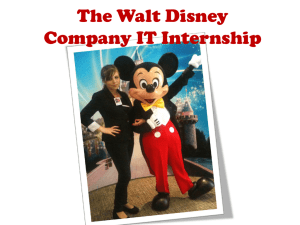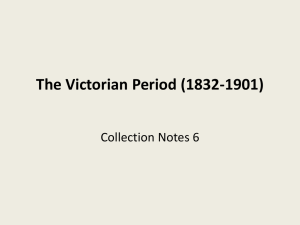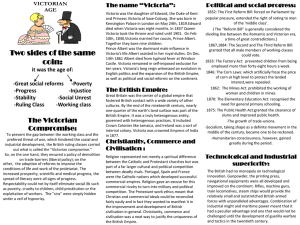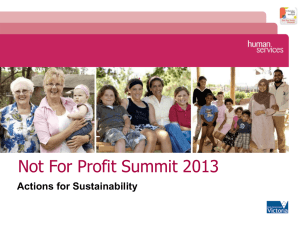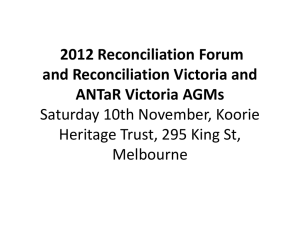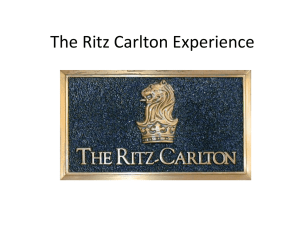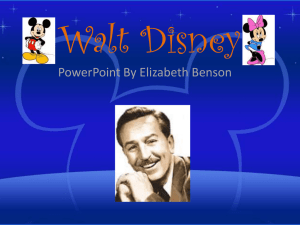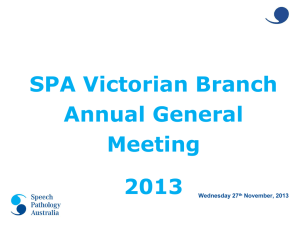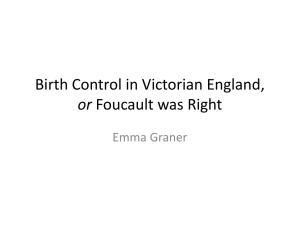Day-1-Jan-16th - Rollins College Social Server
advertisement
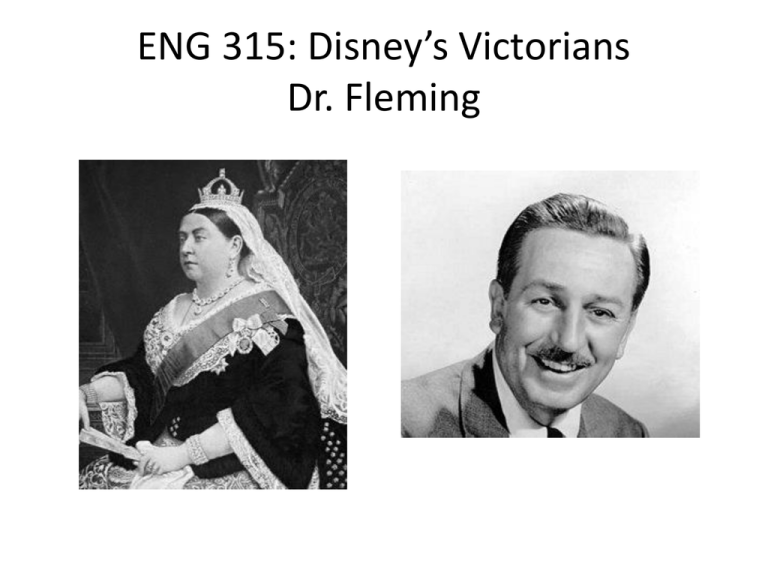
ENG 315: Disney’s Victorians Dr. Fleming Today’s Agenda: • Why “Disney’s Victorians”? – Who are the Victorians, and what could they possibly have to do with Walt Disney? • Class Business • Romantic Childhood Queen Victoria and Walt Disney Walt Disney, 1901-1966 Queen Victoria, 1819-1901 The Norton Anthology of English Literature A. B. C. D. E. F. The Middle Ages: 530 pages 16th and early 17th centuries: 1600 pages The 18th Century: 900 pages Romantic Period (1789-1832): 1000 pages The Victorian Period: 840 pages The 20th Century and After: 1100 pages Rollins College English Courses Required: • ENG 201 Major English Writings I: Critical and historical approaches to writers of the Medieval and Renaissance periods • ENG 202 Major English Writings II: Critical and historical approaches to writers of the long Eighteenth Century, the Romantic period, and the Victorian Age. British Literature Electives: • ENG 310/410 Studies in Anglo Saxon and Medieval Literature • ENG 311/411 Studies in Renaissance Literature • ENG 314/414 Topics in Restoration and 18th-Century Literature • ENG 315/415 Studies in 19th-Century British Literature • ENG 319/419 Studies in 20th-Century British Literature Side note: ENG 305 and 306 American Literature, Beginnings through 1865 and 1865 to Present The Victorians 1832-3: Passage of the first Reform Act expands the franchise to nearly 1/6th of the male population; Factory Act limits working ours (children 14-18 could work only 12 hours a day); slavery is abolished 1837: Victoria becomes Queen 1850: William Wordsworth dies; succeeded as Poet Laureate by Alfred Tennyson 1854: Crimean War 1859: Darwin’s Origin of Species is published 1870: Married Women’s Property Act 1876: Victoria becomes Empress of India 1878: Electric street lighting in London 1890: London’s first subway line opens 1901: Death of Victoria The Victorians 1837: Charles Dickens, Oliver Twist 1847: Charlotte Bronte, Jane Eyre; Emily Bronte, Wuthering Heights 1848: William Thackeray, Vanity Fair 1855: Elizabeth Gaskell, North and South 1865: Lewis Carroll, Alice in Wonderland 1872: George Eliot, Middlemarch 1890: Oscar Wilde, A Picture of Dorian Gray The Victorians and the First “Golden Age” of Children’s Literature 1837: Hans Christian Andersen, Fairy Tales 1846: Edward Lear, Book of Nonsense 1863: Charles Kingsley, The Water Babies 1865: Lewis Carroll, Alice’s Adventures in Wonderland 1868: Louisa May Alcott, Little Women 1870: Jules Verne, 20,000 Leagues Under the Sea 1872: George MacDonald, The Princess and the Goblin 1876: Mark Twain, Tom Sawyer 1880: Joel Chandler Harris, Uncle Remus: His Songs and Sayings 1883: Carlo Collodi, Pinocchio 1887: Robert Louis Stevenson, Treasure Island 1894: Rudyard Kipling, The Jungle Books 1902: J. M. Barrie, The Little White Bird Disney’s Victorians Victorian Texts 1837: Hans Christian Andersen, Fairy Tales 1865: Lewis Carroll, Alice’s Adventures in Wonderland 1870: Jules Verne, 20,000 Leagues Under the Sea 1880: Joel Chandler Harris, Uncle Remus: His Songs and Sayings 1883: Carlo Collodi, Pinocchio 1887: Robert Louis Stevenson, Treasure Island 1894: Rudyard Kipling, The Jungle Books 1902: J. M. Barrie, The Little White Bird Disney Films The Little Mermaid (1989); Frozen (2013) Alice in Wonderland (1951, 2010) Live action film (1954) Song of the South (1946) Pinocchio (1940) Disney studio’s first live action film (1950) The Jungle Book (1967) Peter Pan (1953) Question for the semester: How is our understanding of a text shaped by that text’s reception history? In other words, how have past cultural encounters set the tone for present and future readings? A version of that question: how have Disney’s adaptations of Victorian texts affected our cultural understanding of the period? How much do you know about Walt Disney? “The best way I can tell a story to the public is to use a character they know” – Walter Elias Disney What (else) determines the reception history of Victorian texts? • The Victorians themselves – Already conscious of themselves as “modern” – New technologies: Railroads, steam boats, photography, the transatlantic telegraph (1858), the telephone and phonograph (1876 and 1877) • The Modernists – T. S. Eliot, “The Metaphysical Poets” • Literary Critics (i.e., your professors) Queen Victoria and Walt Disney Walt Disney, 1901-1966 Queen Victoria, 1819-1901 Some Eminent Victorians Major-General Charles George Gordon (1833-1885) led the British army in China before being stationed in Khartoum, where his courageous stand and valiant death made him a hero in Britain. Florence Nightingale (1820-1910), social reformer and nurse during the Crimean War, is considered the founder of modern nursing. Thomas Arnold (1795-1842), educator, historian, and head of Rugby School. Father of Matthew Arnold. Known for his school reform and promotion of classical education. Lytton Strachey, Eminent Victorians (1918) The Victorians, “seem to me a set of mouth bungled hypocrites” (Strachey, in a letter to Virginia Woolf, 1912) “The history of the Victorian Age will never be written; we know too much about it. For ignorance is the first requisite of the historian—ignorance, which simplifies and clarifies, which selects and omits, with a placid perfection unattainable by the highest art.” Richard Owen, “Dulce et Decorum Est” (1917) (read by Kenneth Branagh) Course Goals • Discuss how our understanding of a text is shaped by that text’s reception (in other words, how past cultural encounters set the tone for present and future readings) • Understand, summarize, and respond to critical arguments about literature, recognizing the assumptions literary scholars hold and the different kinds evidence they muster in support of their arguments. • Learn about the Victorian period, the history of children’s literature, and the cultural prominence of Walt Disney. Assignments • Complete all readings and participate in class discussions • Post to course blog and lead discussion of a text • Comment on your classmates’ blog posts. • Locate a contemporary instance of a Victorian text • Summarize two critical articles. • Examine a film adaptation. – This is due in April, but you’ll be most successful if you think about it as we go. • Final project. Books for this class • Charles Dickens, Oliver Twist (Norton, 9780393962925) • Sherlock Holmes (Bedford Critical Edition, 0312089457) • The Classic Fairy Tales, edited by Maria Tater (Norton, 9780393972771) • Lewis Carroll, Alice in Wonderland (Norton, 0393958043) • Barrie, Peter Pan and other Plays (I ordered Oxford World Classics, 0199537836, but any edition will do, provided it’s the play not the novel) • Stevenson, Treasure Island (Broadview, 9781551114095) • Kipling, The Jungle Books (I ordered Signet Classics, 0451529758; but any edition will do) Course Website • http://social.rollins.edu/wpsites/disneysvictori ans/ • Readings posted under “schedule” • Blog posts: – Will summarize previous class, prepare for next – Due Sunday by 5:00pm (you’ll need to be signed in to post) – Be sure to read each week (comment at least 3 times this semester) William Wordsworth, “We Are Seven” “Ode: Intimations of Immortality from Recollections of Early Childhood” Homework for Next Week • Read the syllabus, schedule (if you’re reading this, you’re already on the way) and course policies. For this and all subsequent weeks, read also the blog posts to our course website • On the Victorian Web, read the introduction to the Victorian period and to Queen Victoria • Read Oliver Twist chapters I to XXII (pages 17-155 in the Norton) • Skim Victorian Web’s overview of the Poor Laws and “The anti-Poor Law campaign” • Read William Blake, “The Chimney Sweeper” and E. B. Browning, “The Cry of the Children”

